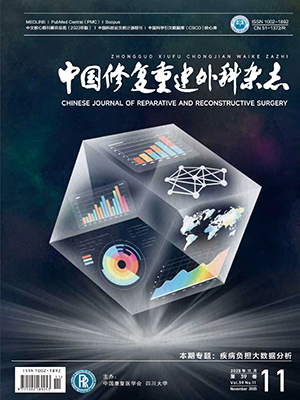Objective To investigate the mechanisms of local application of granulocyte macrophage- colony stimulating factor (GM-CSF) on healing of colonic anastomoses impaired by intraperitoneal oxaliplatin in rats. Methods Sixty 10-week-old male Wistar rats were made the colonic anastomosis model and randomized into 3 groups, 20 rats in each. The rats received intraperitoneal injection of 5% dextrose in group A, and intraperitoneal injection of 5% dextrose and 10 mL oxaliplatin (25 mg/kg) in group B at 1 day; and 50 μg GM-CSF was injected into the perianastomotic area immediately after operation and 10 mL intraperitoneal oxaliplatin (25 mg/kg) was given at 1 day. The general situation of rats was observed after operation. Anastomotic healing was tested by measuring the bursting pressure in vivo at 2, 3, 5, 7 days. Anastomotic healing score was evaluated by histological staining. Immunohistochemical staining of the anastomotic site was used to determine the amount of collagen type I content. Results All animals survived to the experiment end. There was no significant difference in the bursting pressure among 3 groups at 2 and 3 days (P gt; 0.05); the bursting pressure of group B was significantly lower than that of groups A and C (P lt; 0.05). There was no significant difference in mononuclear cells infiltration, mucosal epithelialization, submucosa-muscle layer connection degree, and granulation tissue formation between groups A and C at different time points (P gt; 0.05); groups A and C were significantly better than group B in mucosal epithelialization and granulation tissue formation (P lt; 0.05). Groups A and C were significantly better than group B in mononuclear cells infiltration at 2 and 3 days, and in submucosa-muscle layer connection degree at 5 and 7 days (P lt; 0.05). There was no significant difference in collagen type I content among 3 groups at 2 and 3 days (P gt; 0.05); the content of collagen type I in groups A and C were significantly higher than that in group B (P lt; 0.05) at 5 and 7 days. Conclusion Local administration of GM-CSF may enhance colonic anastomotic healing by early stimulating infiltration of macrophages and increasing collagen deposition.
Citation: LIU Yong,YANG Yang,LIU Hui,SONG Yunjun,JIA Xihua,ZHANG Xiaowei,GUO Jianmei. PRELIMINARY STUDY ON MECHANISMS OF GRANULOCYTE MACROPHAGE-COLONY STIMULATING FACTOR IN ENHANCING IMPAIRED COLONIC ANASTOMOTIC HEALING IN RATS TREATED WITH INTRAPERITONEAL OXALIPLATIN. Chinese Journal of Reparative and Reconstructive Surgery, 2012, 26(10): 1232-1236. doi: Copy
Copyright ? the editorial department of Chinese Journal of Reparative and Reconstructive Surgery of West China Medical Publisher. All rights reserved




